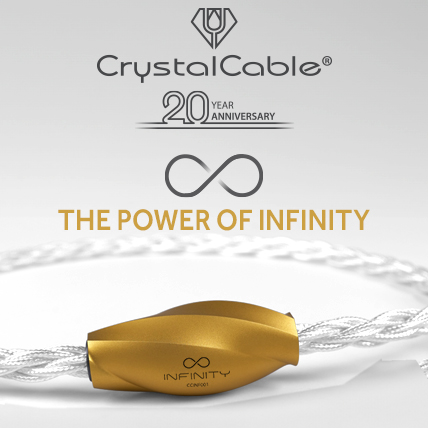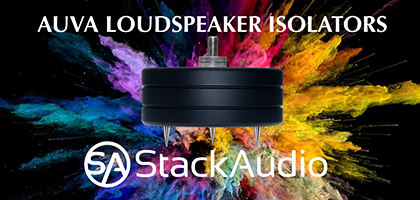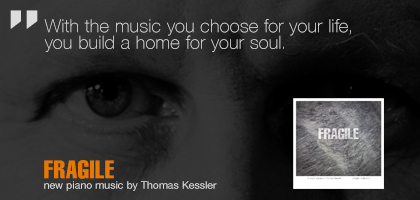 Contents
Contents
No. 257 October 2025
- COVER REVIEW: ANCIENT AUDIO Silver Grand Mono Mk II ⸜ power amplifier • monoblocks » POLAND • Kraków
- KRAKOW SONIC SOCIETY № 153: 30 years of ANCIENT AUDIO » POLAND • Kraków
- FEATURE ⸜ music & technology: HISAO NATSUME presents - In search for the lost great pianism Chopin tradition » part 2 (France) » JAPAN • Tokyo
- REVIEW: AUDIOPHONIQUE Classic AP 300D ⸜ power amplifier » POLAND • Pruszków
- REVIEW: AVATAR AUDIO Holophony No. 1 ⸜ loudspeakers • floor-standing » POLAND • Osowicze
- REVIEW: DIVALDI Gold PA One ⸜ integrated amplifier » POLAND • Kraków
- REVIEW: J.SIKORA Aspire ⸜ turntable (deck + tonearm) » POLAND • Lublin
- REVIEW: MB AUDIO CABLE Silver ⸜ analog interconnect ⸜ RCA » POLAND • Turza Śląska
- REVIEW: XACT N1 ⸜ LAN switch » POLAND • Wrocław


|
JUST MUSIC 
Tomasz Stańko | Wisława The Munich-based ECM Records has a long history. Founded in 1969 it has since released over 1200 albums, mostly jazz, but starting with the 1984 release of Arvo Pärt’s Tabula Rasa, also classical music. Artists on the ECM label include Keith Jarrett, Paul Bley, Jan Garbarek, Chick Corea, Pat Metheny, The Art Ensemble of Chicago and Steve Reich. The company is respected for both its choice of music, as well as its production. Its special status among audiophiles comes as no surprise. 
With time, or – to be precise – as I upgraded my audio equipment, the perspective with which I looked at these recordings has changed. At one point, I found myself facing the opposite direction than I had faced at the start. The treble remained clear, space remained incredibly spacious. The better the audio gear was, the better the system, the more it showed that “bright”, “oversaturated”, and “clinical” were the last thing one could say about ECM-branded records. It suddenly seemed that the vast majority of them sounds warm, that there’s no “detailness” on them – seeing as the little details don’t exist on their own, but are part of a big picture. And the wonderful, silky, deep, completely incomparable blackness of the background began showing. Why? The answer seems simple to me (nowadays): cheap systems in those days – meaning, several or a dozen years ago – sounded just like that: rather sharp, selective, but absolutely non-defined, bringing out mostly the “attack” from CDs, without saturation. And since Manfred Eicher knew from the start what to do to have both selectivity and resolution, his records offered both. The system was “choosing” for us what we heard. And by “system”, I actually mean – “designer”. 
Even in case of a company as even in terms of their repertoire and production as ECM Records, you can always find some outstanding albums, which nested themselves deep in the audiophile group memory. It seems Keith Jarrett’s The Köln Concert is an undisputable “king” when it comes to the number of re-editions, special treatment in Japan (and that’s one of the most important indicators of the status of a recording) and the frequency of playing it back on all sorts of audio shows and conferences as well as on home systems. It’s not uncommon to see Pat Metheny’s records in that role (my favourite album is Offramp, now available on SHM-CD, in the online store CD Japan; Bartek, the graphic editor responsible for what “High Fidelity” looks like, is a huge fan of this guitarist and owns everything which he ever released with anyone). 
Its history begins in 2009, when the floor of the Krakow Opera, incidentally, an institution I worked with for many years (as a sound engineer), made two incredible people meet: Wisława Szymborska, a Polish poet who received a Nobel prize for literature in 1996, and Tomasz Stańko. The program was a jazzy one, and consisted in the poet reading poems from her recently-published tome Tutaj, while the musician played improvisations during the breaks in between. Wisława Szymborska has a large place in my heart. She’s a great artist, and art has a priority in evaluating for me. […] Szymborska was the precursor of popculture. 
As we learn from the very same interview, the “midwife” of this CD is his daughter. Anna Stańko was the one who organized the concert tour, prepared the studio, the contracts and the dates. As she said, “My father is quite restless. I was the one to put peace and order into this album.” The CD was recorded in New York, with local artists. The musician admits that he’s been listening to his own compositions from the album for the past six months. “The title song moves hearts” – adds Anna Stańko. And also, “It’s probably my favorite of dad’s albums.” (quotes from: Tomasz Stańko: Szymborska była prekursorką popkultury, Polskie Radio, see HERE) 
The pre-premiere took place on the 11th of February in the Krakow Opera, with an introduction by Michał Rusinek, the poet’s personal secretary, and a short recital by Magda Umer, her friend. I had a great place – in the fifth row, slightly on the right, directly in front of the drums, played by Gerald Cleaver. The drum set was “gathered” by two, placed directly above it, condenser microphones, a dynamic microphone for the bass drum and microphones right beside the snares. Sławomir Kurkiewicz’s double bass, as he was replacing Thomas Morgan on the Polish part of the tour, was found in the center, and had its own amp and microphone. The next two condenser microphones were set up above the strings of David Virelles’ grand piano. And there was obviously a wireless micro-port microphone for Stańko. 
Back in the day, the company was mostly known for its vinyl LPs. Ron Ploeger, one of the readers of HF, who writes for the Danish portal “Audio Review” is a collector and owner of almost all ECM vinyl records and finds them to be something unique and extraordinary. It’s difficult to disagree with him. Most music lovers and audiophiles know this company for its CDs, however. These also have a “cult” status. Especially their Japanese editions – previously on a golden coating, now in SHM-CD editions. The company was always experimenting with new technologies, and was one of the first to begin producing its recordings from A to Z, i.e. from the recording, through mastering, up to its release in a digital domain (DDD). It’s no wonder that as soon as the opportunity appeared, they began offering their collections online. Such is the case with the album Wisława - it’s available in 24-bit files, with 88.2 kHz sampling frequency. The latter value is usually chosen by companies that convert DSD signal (SACDs) to PCM, because it’s the most convenient. ECM never “plunged” into SACD and has been faithful to PCM encoding. The 88.2 kHz value was chosen due to its easy down-conversion into 44.1 kHz, which is the CD sampling frequency. The tracks which we’ll find on the double album Wisława aren’t as “accessible” as the ones on Lontano. Two hours inside the Krakow Opera passed way too quickly, though – and such will be the case with Tomasz Stańko’s new album, as long as we let it seduce us. Tomasz Stańko, Wisława Sound quality  Marcin Ostapowicz | JPLAY v5 If we’re talking about files, we definitely have to mention something that has caused a stir among audiophiles and music lovers with interest in computer audio: the fifth version of JPLAY, the software player, has been available for some time. The company is on the doorstep of many new challenges, it’s currently changing its logo (we’re the first to show you the new one) and it is preparing the first “physical” audio products to be sold under a new brand name. At the moment, however, I’m most interested in JPLAY v5. 
|
I’ve been using one of the older versions for a while (see HERE), so I wanted to see what the difference between the new and the old version is. I asked directly at the source, Marcin Ostapowicz, who visited me to install the software: JPLAY v5 is the most important update of our program thus far, taking into account the number of changes in the functional area and the improvements we’ve been able to achieve regarding sound quality. We’ve worked on the “five” for almost half a year, starting a closed beta test at the end of development. This was all done to test the new architecture and eliminate bugs, but also to verify whether the program sounds better than the previous version, or whether we just think so. The idea for the beta test was terrific – a few hundred people signed up, enthusiastic about testing subsequent versions of the application. JPLAY v5 has former plug-ins for programs (Jriver, foobar2000...) replaced by ASIO, a virtual driver which serves the purpose of a link between the player and the playback engine. The driver (JPLAY Driver) communicates with the JPLAY Audio Service through TCP/IP. What are the benefits for the listener? Primarily, JPLAY now integrates itself with any software player which supports ASIO. Previous versions of JPLAY only allowed for playback of a select few lossless audio formats and didn’t let you fully use the functions of a given player. V5 eliminates these limitations – you can play anything and activate any playback function, including DSP (upsampling, correcting room acoustics etc.). Aside from most popular apps like foobar2000 and JRiver, JPLAY can now be used with online streaming services (such as Spotify, available in Poland from February, through the Fidelify plugin, as well as Qobuz – the only online streaming service offering lossless audio files in FLAC format), as well as apps that work with the popular Logitech Squeezebox (through the Squeezelite client). JPLAY v5 also adds a completely new feature – StreamerMode – where one computer (ControlPC) becomes a music library and a control station, and the other (AudioPC) becomes a dedicated file transport. Most of the operations is carried out on the ControlPC (loading, decompression, volume control, DSP, etc.). The AudioPC simply receives “ready” bytes with music – it doesn’t need any special software installed except JPLAY. I’ve already got JPLAY v5 – and you? 
 Emtebe | The Land Between Solar Systems Hi! 
You can listen to the disc on my BandCamp profile: LINK The first four people who use these codes will be able to download the whole album for free. Everyone else will have to pay. Because I’m already past listening to the album, I can honestly encourage you to listen to it, even if you were too late to listen to it for free: it’s not about the money, but about the pleasure of listening, so to speak. The sound quality of this record is exceptionally good, making it a great listen. The clarity and treble balance is extremely well-done. Sound quality  Depeche Mode | Heaven x 2 I waited impatiently for the new album Delta Machine, like any Depeche-head. Left slightly schizoid after the 2009 release of Sounds of the Universe (see HERE), as the new formal ideas were very interesting, yet there were no new hits, I was very eager after having heard that the new album was meant to be similar to Violator, and full of smash hits 
Knowing the first single, Heaven, which served as a teaser for Delta Machine, knowing its basic version with an extra track written by Gahan (All That’s Mine), I don’t know what to think. Primarily, there’s no talking about a smash hit. Heaven sounds like a rejected track from Sounds of The Universe. Identical sounds, tones, instruments, and no innovation. Gahan’s track is slightly more interesting, but just barely – it’s no smasher. Paradoxically, the announcement made by Sony Music (although the logo of Mute, the band’s former record label, also appears on the singles) is best-met by the maxi-single track Heaven. Owle Remix. There’s a pulse, melody and lightness, actually similar to the stuff from Violator. But in spite of that it has little to do with the masterwork of its genre. And the sound, jeez! The previous album was recorded quite well, especially on vinyl. The singles, however, sound terrible – the sound is muddy, with a very low resolution, completely unselective. And dynamically flat. I’ve never heard sound this bad on a Depeche Mode album. My heart is torn to pieces – my favorite band is releasing a record which seems very bad. Both artistically, and technically speaking. Of course I ordered the extended, CD Japan version (see HERE), but only out of sentiment; I don’t expect very much from it. Sound quality: 5/10  Kamp! | Kamp! The Polish band Kamp! gained recognition after the release of their maxi-single Cairo, also available on blue vinyl (see HERE). Released by the well-known record label D.I.S.C.O. Texas it brought with it music called New Disco, or Indie Dance. It’s described as a combination of melodic synth-pop with influences of the 80s New Wave, krautrock, and French house music. I think it’s mostly melodic synth-pop. 
We had to wait another year for the rest of the album, but here it is – released by Brennnessel, and distributed in Poland by Agora. Evidently, they see some potential in this release. I think they’re right. Eleven tracks, performed by three friends, “flow into” the listener very smoothly, with an intelligent, retro disco beat. The sound isn’t that great, typical for production from the 70s and 80s, but I think that was the intentions of the producers. The album carries good vibrations, is very energetic, and I think is worth listening to. Sound quality: 6/10  AudioFeels | Live While in a “good company”, it is considered a faux pas to speak about artists performing on talent-hunting TV shows. It is presumed that it’s all a masquerade done to increase the number of viewers, not to actually find new artists. It’s hard to deny that programs like Got Talent, Polish Idol or Must Be The Music are entertainment shows. From time to time, you can see the flash of fresh genius, waiting to be brushed up and polished. Such was the case with Polish singers Justyna Steczkowska and Monika Brodka, with the band Me Myself and I from the second edition of Poland’s Got Talent, and such is the case with Audiofeels, a band from Poznan which came out third place in the aforementioned edition of Got Talent. These boys have got a real gift in their voices, which exploded on UnCovered (2009), their first album. I like listening to it and use it for testing purposes sometimes. If you have a good system, and would like to make someone who isn’t an audio-enthusiast sit down in awe, make them listen to Sound of silence, the album’s first track, followed by the rhythmical Crazy. They’ll leave your house a different person. 
Their second record, the 2011 double-album UnFinished wasn’t quite as good, although I did personally like a few tracks on it – both on the original content disc (Side A) and on the cover disc (Side F). The sound quality was worse than on the debut album, however – less clear, with an oversaturated midrange and upper bass. It wasn’t bad, but UnCovered remained superior. Sound quality: 5/10  Beyeruth Wagner | The Ring Project I., wyk. Garben, Hoppe Wagner’s music is associated with a powerful performing ensemble. Wisely so – the best performances of his pieces come from albums recorded by large symphonic orchestras and a large choirs. However, sometimes you get to listen to something very primal and fresh. Do you remember the record Let it be – Naked by The Beatles? Paul McCartney’s 2003 release contained recordings from the last, 1970 album of the Great Four in completely new versions. The material, recorded on a multitrack tape recorder was remixed and remastered. The aim of the project was “cleansing” the musical material of ornamental, baroque pompousness, leaving the most important: the compositions. Whether this was actually achieved is highly doubtful. The experiment itself was an interesting idea, however. 
The album I’d like to talk about is also a kind of “cleansing”, this time of Wagner’s music. In the attached leaflet, we find: The world premiere of the Ring transcribed for 2 pianos by Hermann Behn, 1914. Wagner without horns, drums, masquerade. Pure Wagner. On Steingraeber concert grands from Bayreuth, in Bayreuth. Masterfully recorded and produced for the audiophile on Dynaudio. Revolutionary. I must leave the judgment of the musical result of this experiment to you, I am unable to carry out this task. I can, however, say a few words about its production. It’s outstanding. The sound of the instruments was caught at some distance, our heads aren’t pushed under a piano lid. The grand piano’s splendor isn’t conveyed through emphasized bass, but through a powerful volume – the whole scene is full and saturated with sound. The sound is quite silky, without a ‘glossy’ right hand, but that’s exactly what the grand piano sounds like from a distance. It’s all very calm, whole and liquid. Reference. Sound quality: REFERENCE 
|
About Us |
We cooperate |
Patrons |
|
Our reviewers regularly contribute to “Enjoy the Music.com”, “Positive-Feedback.com”, “HiFiStatement.net” and “Hi-Fi Choice & Home Cinema. Edycja Polska” . "High Fidelity" is a monthly magazine dedicated to high quality sound. It has been published since May 1st, 2004. Up until October 2008, the magazine was called "High Fidelity OnLine", but since November 2008 it has been registered under the new title. "High Fidelity" is an online magazine, i.e. it is only published on the web. For the last few years it has been published both in Polish and in English. Thanks to our English section, the magazine has now a worldwide reach - statistics show that we have readers from almost every country in the world. Once a year, we prepare a printed edition of one of reviews published online. This unique, limited collector's edition is given to the visitors of the Audio Show in Warsaw, Poland, held in November of each year. For years, "High Fidelity" has been cooperating with other audio magazines, including “Enjoy the Music.com” and “Positive-Feedback.com” in the U.S. and “HiFiStatement.net” in Germany. Our reviews have also been published by “6moons.com”. You can contact any of our contributors by clicking his email address on our CONTACT page. |
 



|
   |
main page | archive | contact | kts
© 2009 HighFidelity, design by PikselStudio,
projektowanie stron www: Indecity











